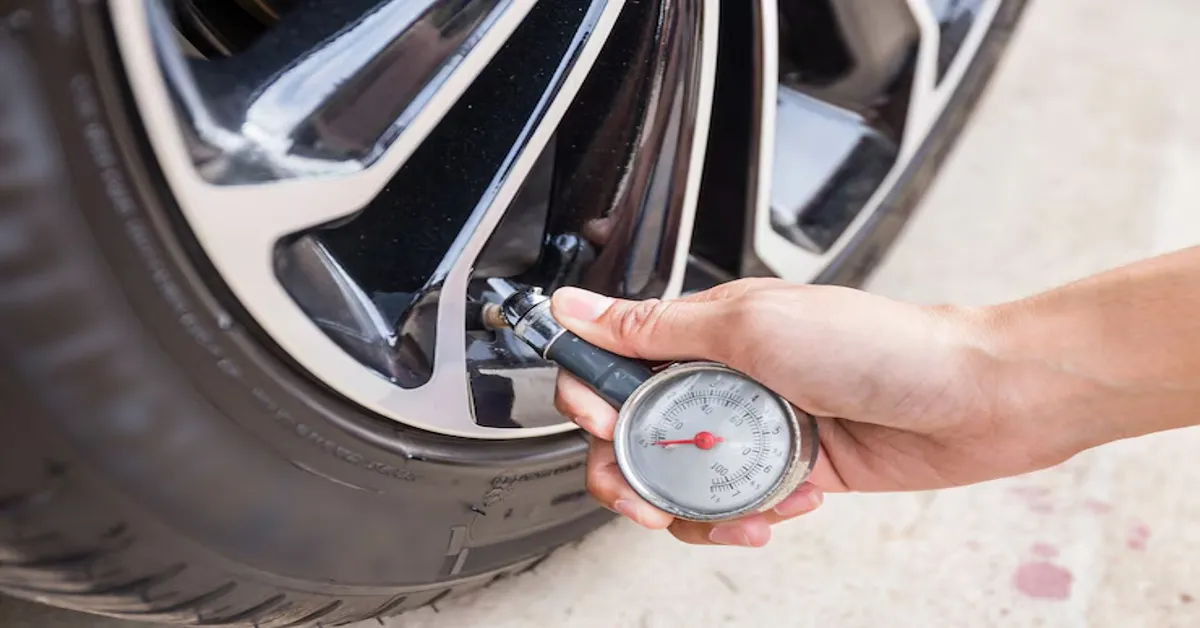When the Service Tire Monitor System alert appears on your dashboard, it’s not just another cryptic warning light. It’s a vital notification that your vehicle’s onboard computer has detected an issue with the Tire Pressure Monitoring System (TPMS)—a safety feature now standard in most modern vehicles. If you’ve ever seen this alert and wondered whether it’s urgent, how it works, or what it means for your driving experience, this article offers a complete, updated guide.
The Service Tire Monitor System is a digital diagnostic alert that indicates a fault or malfunction in your TPMS sensors, receivers, or internal software. While not always an immediate safety risk, ignoring this system can lead to long-term damage, reduced fuel economy, or even sudden tire failure on the road.
This article explains the technology, the causes behind the alert, how different automakers implement TPMS, and what every driver should know to maintain both safety and compliance.
What Is a Tire Pressure Monitoring System (TPMS)?
At its core, a Tire Pressure Monitoring System (TPMS) is a built-in vehicle safety mechanism designed to monitor air pressure inside pneumatic tires. It alerts the driver when tire pressure drops significantly below the recommended level—typically 25% or more.
Modern vehicles use one of two main types of TPMS:
- Direct TPMS: Uses physical pressure sensors mounted inside each wheel/tire assembly. These sensors send real-time data to the vehicle’s ECU (Electronic Control Unit).
- Indirect TPMS: Relies on the vehicle’s ABS (Anti-lock Braking System) to detect changes in wheel rotation speed, which may indicate underinflation.
Both systems have their pros and cons, but direct TPMS is more accurate and is required in most new vehicles sold in the U.S. and Europe.
What Does “Service Tire Monitor System” Mean?
The phrase “Service Tire Monitor System” appears when your vehicle detects a fault in the TPMS—not just low pressure, but a malfunction in the system itself.
This can include:
- A dead or weak sensor battery inside one of the wheels
- A sensor that has been damaged during a tire change or rotation
- A lost signal due to corrosion, interference, or physical distance
- Errors within the vehicle’s ECU software
- A missing or incorrectly programmed sensor after tire replacement
- Interruption from aftermarket wheels or tire pressure settings
This message is different from a basic “Low Tire Pressure” warning. The Service alert indicates that the monitoring system cannot perform its function reliably.
Table: Common Causes of TPMS Failure and Suggested Actions
| Cause | Warning Triggered | Recommended Action |
|---|---|---|
| Dead TPMS Sensor Battery | Service Tire Monitor System | Replace sensor(s); most last 5–10 years |
| Damaged Sensor During Tire Change | Service Tire Monitor System | Reinstall or replace sensor immediately |
| Tire Rotation Without Reprogramming | Intermittent Alerts or No Readings | Perform TPMS relearn procedure |
| Aftermarket Wheels Without Sensors | Constant System Fault Warning | Install compatible TPMS sensors |
| Software Bug in ECU or BCM | Random or persistent errors | Update software at dealership or service center |
| Corrosion or Valve Stem Failure | Warning + visible slow leak | Replace valve stem and sensor housing |
How TPMS Relearn and Reset Procedures Work
When tires are rotated, replaced, or a new TPMS sensor is installed, many vehicles require a TPMS relearn procedure. This process teaches the ECU to recognize the new sensor IDs and match them with each wheel’s position.
Relearn can be done in several ways:
- Manual Relearn: Initiated by a sequence of steps (e.g., turning ignition on/off, pressing brake pedal, honking horn)
- OBD Relearn: Uses a diagnostic tool connected to the OBD-II port
- Auto Relearn: Some vehicles relearn automatically after driving at 15+ mph for 10–20 minutes
- Scan Tool Relearn: Requires dealership or certified technician with brand-specific tools
Failing to perform this relearn may trigger the Service Tire Monitor System alert even if all tires are fine.
How Different Automakers Handle Tire Monitoring
TPMS design varies across brands. Here’s a look at how some major automakers implement and service their systems.
| Brand | TPMS Type | Unique Feature |
|---|---|---|
| General Motors | Direct | “Service Tire Monitor System” message via DIC |
| Toyota | Direct (mostly) | TPMS light only; no message; requires techstream tool |
| BMW | Indirect | Uses ABS; resets via iDrive system |
| Ford | Direct | Sensors require periodic retraining after rotation |
| Honda | Both | Some models use indirect (ABS); others direct (TPMS ID) |
| Tesla | Direct | Real-time readings on display; over-the-air updates |
Because of these variations, always consult your owner’s manual or brand-specific tech documentation before troubleshooting.
How to Respond When You See “Service Tire Monitor System”
When this warning appears, take the following steps:
- Don’t Panic: This is typically not an immediate safety threat, but it should be addressed soon.
- Visually Inspect All Tires: Look for visible signs of underinflation, leaks, or damage.
- Check Tire Pressure Manually: Use a reliable gauge and inflate tires to recommended PSI.
- Attempt a Manual Reset: Some vehicles allow you to manually reset the TPMS using dashboard controls.
- Use an OBD-II TPMS Scan Tool: This will tell you which sensor is faulty or unreadable.
- Visit a Service Center: If the warning persists, have a certified technician inspect sensors and perform a relearn or replacement.
Ignoring the issue can eventually lead to total system failure or undetected tire problems.
Costs Associated with TPMS Repair
TPMS service varies by vehicle type, age, and sensor accessibility.
| Service Type | Typical Cost (USD) |
|---|---|
| Sensor Replacement (per wheel) | $50–$120 |
| Full Set of 4 TPMS Sensors | $200–$500 |
| TPMS Relearn or Reset Procedure | $20–$80 |
| Diagnostic Scan at Dealership | $80–$150 |
| Valve Stem Replacement (with sensor) | $15–$50 |
In many regions, vehicles cannot pass safety inspections if the TPMS light or Service Tire Monitor System warning is active.
Impact of Ignoring TPMS Malfunctions
Although the alert may seem minor, ignoring TPMS failures can result in:
- Poor fuel economy from underinflated tires
- Reduced handling and braking performance
- Increased tire wear and risk of blowouts
- Legal fines or inspection failures in jurisdictions where TPMS is mandatory
- Inability to detect actual tire issues in the event of a real problem
Driving with a disabled or inoperative TPMS means giving up one of your car’s most critical early-warning systems.
The Role of TPMS in Fuel Efficiency and Emissions
Maintaining proper tire pressure isn’t just about safety—it’s about efficiency and environmental impact. Underinflated tires can decrease fuel efficiency by up to 3% and increase rolling resistance, leading to greater emissions.
In fact, TPMS regulations were enacted after studies showed that millions of drivers unknowingly operate with dangerously low tire pressure, which contributes to:
- Higher CO₂ emissions
- Faster tire replacement cycles
- Greater oil and rubber consumption
Thus, repairing or servicing the TPMS system is both a safety responsibility and an environmental obligation.
Smart Tires and the Future of Tire Monitoring
In 2025 and beyond, TPMS is evolving into intelligent tire systems. These integrate with EVs, autonomous platforms, and cloud-based maintenance.
Emerging features include:
- Real-time tread depth measurement
- Temperature and humidity monitoring inside the tire
- Cloud-based pressure logs for fleet management
- Bluetooth-enabled sensors that auto-pair with phones and dashboards
- Predictive maintenance warnings via machine learning models
Platforms like Continental’s ContiConnect and Michelin’s RFID-enabled tires are paving the way toward a future where tire monitoring is autonomous and predictive—not reactive.
Conclusion: A Small Sensor With a Big Safety Role
Your vehicle’s Service Tire Monitor System warning is more than an annoying light—it’s a signal that one of your car’s most important safety and efficiency systems needs attention. Whether it’s a simple reset, a sensor replacement, or a more technical software update, addressing this warning ensures your tires—and your driving experience—remain safe, smooth, and smart.
As digital diagnostics become central to how we interact with our vehicles, knowing what these warnings mean empowers you not just as a driver—but as an informed steward of your machine.
Frequently Asked Questions (FAQs)
1. What does “Service Tire Monitor System” mean on my dashboard?
It indicates a malfunction or fault in the Tire Pressure Monitoring System, such as a dead sensor, communication issue, or system software failure.
2. Is it safe to drive with the TPMS warning light on?
Yes, temporarily. But it disables your ability to detect real tire pressure loss, which could become a safety issue if ignored.
3. Can I replace TPMS sensors myself?
Yes, if you’re experienced with tire dismounting and own a TPMS scan/relearn tool. Most people should visit a certified tire shop.
4. Do I need to replace all sensors if one fails?
Not necessarily. However, if multiple sensors are aging (5+ years), it’s cost-effective to replace the full set at once.
5. Does weather affect TPMS accuracy?
Yes. Cold weather can temporarily lower tire pressure and trigger warnings, even if sensors are functioning correctly.









